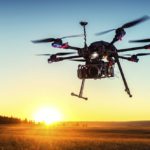 Politics
Politics  Politics
Politics  Weird Stuff
Weird Stuff Ten Bizarre Facts About The Doge Meme
 Our World
Our World 10 Ways Your Christmas Tree Is More Lit Than You Think
 Movies and TV
Movies and TV The 10 Coolest Stars to Set Sail on The Love Boat
 History
History 10 Things You Didn’t Know About the American National Anthem
 Technology
Technology Top 10 Everyday Tech Buzzwords That Hide a Darker Past
 Humans
Humans 10 Everyday Human Behaviors That Are Actually Survival Instincts
 Animals
Animals 10 Animals That Humiliated and Harmed Historical Leaders
 History
History 10 Most Influential Protests in Modern History
 Creepy
Creepy 10 More Representations of Death from Myth, Legend, and Folktale
 Politics
Politics 10 Political Scandals That Sent Crowds Into the Streets
 Weird Stuff
Weird Stuff Ten Bizarre Facts About The Doge Meme
 Our World
Our World 10 Ways Your Christmas Tree Is More Lit Than You Think
Who's Behind Listverse?

Jamie Frater
Head Editor
Jamie founded Listverse due to an insatiable desire to share fascinating, obscure, and bizarre facts. He has been a guest speaker on numerous national radio and television stations and is a five time published author.
More About Us Movies and TV
Movies and TV The 10 Coolest Stars to Set Sail on The Love Boat
 History
History 10 Things You Didn’t Know About the American National Anthem
 Technology
Technology Top 10 Everyday Tech Buzzwords That Hide a Darker Past
 Humans
Humans 10 Everyday Human Behaviors That Are Actually Survival Instincts
 Animals
Animals 10 Animals That Humiliated and Harmed Historical Leaders
 History
History 10 Most Influential Protests in Modern History
 Creepy
Creepy 10 More Representations of Death from Myth, Legend, and Folktale
10 Human Inventions That Are Rewriting the Future
Watching the local news in most parts of the world might lead one to believe that we’re completely surrounded by disaster, conflict, and societal decline. Bad news dominates the headlines because it demands our attention.
However, it rarely tells us the full story of what’s happening across the planet. Behind the scenes, countless scientists, engineers, and inventors are quietly working to build a better future for all of us. They’re doing this not only for us, but also for the generations who will come after us. Their efforts often go unnoticed, yet they represent some of the most transformative developments of the early twenty-first century.
In this list, we’ll explore ten remarkable inventions that show how human ingenuity is reshaping the world. These technologies are being tested, refined, and, in many cases, implemented in real-world environments. From harvesting electricity with bacteria to replacing human organs with machines, these breakthroughs combine bold imagination with practical science.
Each invention in this list tells a story of unlimited possibility. Together, they point toward a future shaped by innovation, responsibility, and intelligent design.
Related: 10 Books That Accidently Showed Us Our Future
10 Microbial Fuel Cells (MFCs)
Climate change is forcing us to rethink how we generate electricity. Fossil fuels aren’t a sustainable long-term option due to their CO₂ emissions. For many, the turning point came on June 23, 1988, when Dr. James Hansen, then Director of NASA’s Goddard Institute for Space Studies, testified before the U.S. Senate. He warned that the greenhouse effect had been detected and was already raising global temperatures.
Microbial fuel cells (MFCs) are an emerging technology that uses bacteria to generate clean electricity. Instead of burning fuel, they harvest electrons released as bacteria break down organic waste. The result is a small but steady flow of power.
Recent breakthroughs using materials like graphene and carbon nanotubes have improved how efficiently electrons move from bacteria to electrodes. These upgrades could increase power output and lower costs.
If researchers overcome current challenges, MFCs could power remote sensors, clean wastewater, and deliver electricity to off-grid locations. They’re not ready for wide use yet, but they offer a glimpse of how even microbes might help build a cleaner, more sustainable future.[1]
9 Artificial Tongue (e-Tongue)
The human tongue is an astonishing chemical sensor, capable of detecting subtle differences in taste and texture. Scientists have worked to create an artificial tongue for years, and now they are finally seeing results. The outcome is the “electronic tongue,” or e-Tongue, a sophisticated device designed to mimic the human tongue’s ability to analyze flavors.
The e-Tongue consists of sensors that react to chemical compounds in food and liquids. Each sensor is coated with a material that responds differently to specific substances, such as salts, acids, sugars, and amino acids. When a liquid sample touches the sensors, the resulting electrical signals form a pattern that software can analyze. These patterns allow the e-Tongue to distinguish between different flavors and even detect minute changes in quality, contamination, or spoilage. Some models are so precise that they can tell the difference between two wines from the same vineyard or identify counterfeit whiskey.
Today, e-Tongues are used in the food and beverage industry, pharmaceuticals, and environmental monitoring. They help companies maintain quality control, develop new flavors, and monitor water for pollutants. By mimicking the complex chemistry of human taste, the e-Tongue opens the door to a future where machines may help to ensure not just the safety of our food, but its flavor and freshness as well.[2]
8 Ferrofluid Seals in Spacecraft
Maintaining airtight seals in spacecraft is one of the most critical challenges in space engineering. Traditional mechanical seals degrade over time, especially when exposed to the extreme conditions of space. Ferrofluids offer a different solution. These are liquids infused with nanoscale magnetic particles that respond to magnetic fields. When used properly, ferrofluids can form dynamic, reliable seals that remain airtight without the wear and tear of physical contact.
In spacecraft, ferrofluid seals are often placed around rotating shafts that pass between pressurized and vacuum environments, such as those found in gyroscopes or reaction wheels. A ring of permanent magnets holds the ferrofluid in place, suspending it between the rotating shaft and the fixed housing. This magnetic trap prevents air from escaping while still allowing the shaft to rotate freely. Because there is no physical contact, these seals do not wear out as quickly, making them ideal for long missions in space.
Ferrofluid-based sealing technology is already being used by NASA and other space agencies in satellite systems and orbital platforms. Their durability, precision, and resistance to vacuum leakage make them a key innovation in the pursuit of maintaining life support and mechanical reliability in space.[3]
7 Magnetohydrodynamic Propulsion (MHD) Ships
Imagine a ship that glides through water without any moving parts like propellers or turbines. That’s the promise of magnetohydrodynamic (MHD) propulsion. This advanced technology propels vessels using electromagnetic forces by pushing conductive fluids, such as seawater. The result is nearly silent motion with no mechanical noise or turbulence.
MHD works by passing an electric current through seawater in the presence of a strong magnetic field. According to the Lorentz force principle, this interaction creates a force that pushes the water backward, which in turn moves the ship forward. Since there are no rotating components, MHD systems are less prone to mechanical failure and can theoretically operate with minimal maintenance. The lack of moving parts also makes MHD propulsion very quiet, which is particularly appealing for military submarines and stealth vessels.
Although the concept has been around for decades and was even featured in popular culture, such as in the film The Hunt for Red October, real-world applications have been limited. The technology requires extremely powerful magnets and significant energy input, which has made it difficult to scale. However, with advances in superconductors and power systems, MHD propulsion may still have a role in the future of naval technology.
If these engineering hurdles can be overcome, MHD ships could change how we think about marine propulsion. They could reduce mechanical failure, lower noise signatures, and improve long-term efficiency in demanding naval environments.[4]
6 Cyborg and Robotic Insects for Search and Rescue
On May 8, 1989, Star Trek: The Next Generation aired an episode titled “Q Who,” in which the powerful being Q hurls the Enterprise across the galaxy and forces the crew into a deadly first encounter with the Borg, a cybernetic species that blends biology with machinery. Today, real-life scientists are pursuing similar ideas by creating both cyborg insects and fully robotic ones for search-and-rescue missions.
In one approach, researchers turn living beetles into controllable drones by implanting tiny electronics that stimulate their muscles. These cyborg beetles carry their own weight, use no external power source, and can be steered remotely through debris or tight spaces.
In another, scientists at institutions like MIT have built robotic insects from scratch. These tiny flying machines mimic the movement of real insects using lightweight materials, microactuators, and efficient wing designs. Some models now achieve flight times one hundred times longer than earlier versions.
Together, these advances in biointegrated and mechanical insect drones could allow future teams to explore dangerous environments, locate survivors, and monitor the world in ways never before possible.[5]
5 Artificial Synapses Made from Memristors
The human brain is an astonishing network of synapses, tiny connections that allow neurons to communicate and adapt based on experience. To build computers that can learn and adapt like a brain, researchers have turned to memristors, a special kind of electrical component that can mimic the behavior of a biological synapse.
Memristors, short for memory resistors, are tiny devices whose electrical resistance changes based on the history of voltage applied to them. Unlike traditional computer memory, which stores data in binary form, memristors can store information as a gradient, much like how a synapse strengthens or weakens over time depending on how often it is used. When arranged in networks, memristors allow for computations that resemble how real brains learn, forget, and recognize patterns.
Artificial synapses made from memristors are now being used to build neuromorphic systems, computers that process information in ways inspired by the brain. These systems are more energy efficient than conventional computers and show promise in applications such as image recognition, language translation, and robotics.
As the technology matures, memristor-based brains could become the foundation for future intelligent machines that learn from their environment instead of being programmed step by step.[6]
4 Silicon Retina Implant (The Argus II)
For many years, complete blindness caused by diseases like retinitis pigmentosa was considered irreversible. Retinitis pigmentosa is an inherited condition that slowly deteriorates the retina’s light-sensitive cells, ultimately leading to total vision loss. Advances in neural prosthetics, however, have begun to challenge that view. One of the most significant breakthroughs is the Argus II, a silicon-based retinal implant that offers limited sight to individuals who were once completely blind.
The system employs both implanted and external components. A small electrode array is surgically attached to the retina, while a pair of glasses equipped with a built-in camera records the surrounding environment in real time. This visual data is then sent to a small video processor worn on the body, where it is converted into electrical signals. Those signals are transmitted wirelessly to the implant, which in turn stimulates the remaining functional cells in the retina. The brain interprets these signals as patterns of light, enabling the user to detect outlines, movement, and changes in brightness.
Although the resulting vision is crude and lacks fine detail, it remains incredibly valuable. Many users have learned to recognize doorways, follow lines on the ground, and sense when someone is approaching. For individuals who lost all functional sight, the Argus II provides a novel way to experience and navigate their surroundings, a possibility that was once considered entirely out of reach.[7]
3 Bionic Leaf
Photosynthesis is the process that allows plants to convert sunlight, water, and carbon dioxide into chemical energy. It serves as the foundation of most life on Earth. It has long inspired scientists to develop artificial systems that can replicate its function.
Researchers at Harvard University have developed such a system, known as the bionic leaf. This device uses solar panels to split water into hydrogen and oxygen. Genetically engineered microbes then consume the hydrogen and absorb carbon dioxide from the air to produce valuable compounds such as liquid fuels and ammonia-based fertilizer.
Unlike earlier artificial photosynthesis systems, the bionic leaf can operate reliably in open-air environments. One version of the device achieved a solar-to-biomass conversion efficiency of up to 10%, which is significantly higher than the roughly 1 percent efficiency found in natural photosynthesis.
This increase in performance makes the technology promising for real-world applications. The bionic leaf could enable localized fertilizer production, support carbon-neutral fuel generation, and contribute to efforts that reduce greenhouse gas levels. With further refinement, it may become an important tool in building a more sustainable industrial future.[8]
2 Topoconductors: A New State of Matter for Quantum Computing
Topoconductors are a newly engineered state of matter that conduct electricity based on their topological structure, which refers to properties defined by the shape and symmetry of a material at the atomic level. One way to understand topology is to compare a donut and a coffee mug. Although they look different, both have a single hole and can be reshaped into each other without being cut or broken. That shared characteristic is what makes them topologically equivalent.
In 2025, Microsoft introduced topoconductors as part of its Majorana 1 chip, a design intended to improve the stability of qubits. Qubits are the building blocks of quantum computers. They are powerful but fragile; even minor disturbances such as heat, electrical noise, or magnetic fields can cause them to lose their quantum state. Topoconductors were created to host Majorana zero modes, which are rare quasiparticles that behave as especially stable qubits. Their stability comes from the material’s topological structure, which helps protect them from outside interference.
The Majorana 1 chip is built from indium arsenide and aluminum. Indium arsenide allows electrons to move freely with very little resistance, while aluminum becomes superconducting at low temperatures. When combined, these materials create the right environment for topoconductors to support stable Majorana zero modes. This design moves away from earlier superconducting chip architectures and offers a stronger, more scalable foundation for future quantum systems.
As the technology continues to mature, topoconductors may help quantum computers take on problems that even the fastest classical computers cannot solve.[9]
1 Fully Implantable Artificial Heart
Heart failure remains one of the leading causes of death worldwide. In 2021 alone, cardiovascular disease was responsible for about one-third of all deaths, or roughly 20.5 million people. For many patients in critical condition, a heart transplant has been the only real option. But donor hearts are scarce, and thousands die each year while waiting.
That may be starting to change. In a recent breakthrough, a man in India survived for over 100 days with a fully artificial titanium heart. This device replaced the organ entirely, unlike earlier machines that only supported weak hearts. It included a titanium blood pump, internal sensors, and rechargeable batteries, and it adjusted blood flow automatically in response to the body’s needs. He became one of the first people to live without any biological heart tissue.
This builds on earlier work, such as the Carmat heart in France, which uses biocompatible materials and adaptive microelectronics to mimic the function of a real heart. It adjusts output based on movement and oxygen demand, just like a natural heart. Because the device is fully mechanical, it doesn’t trigger immune rejection and removes the need for lifelong immunosuppressive drugs.
Fully implantable hearts are not yet common, but that could change soon. If the technology keeps improving, patients with total heart failure may finally have a reliable, long-term solution.[10]








